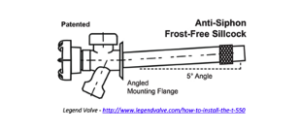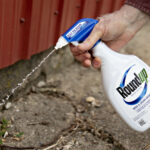Each year, water damage and freezing pipes cost insurers $15-$20 billion and result in claims from approximately one in 50 insured homes. While many cases of water damage are caused by a lack of maintenance or normal wear and tear, in the winter months, claims related to water damage and freezing pipes are extremely common.
Claims related to frozen pipes typically fall into one of two categories: either pipes filled with water are exposed to freezing temperatures or pipes that should be dry end up filling with water unintentionally during freezing weather conditions. We saw both types of claims during the Texas Freeze of 2021, which has led to MWL’s handling of nearly $50 million in subrogation claims against the Electric Reliability Council of Texas and the various power providers. But tucked within those claims are many claims involving frozen pipes which were not even remotely prepared for sub-zero weather.
Often, frozen pipe claims are the result of multiple factors. Aggressive subrogation investigation means we must investigate the system as a whole, consider all possible causal factors, and collect evidence not only relating to the pipe itself but its surroundings as well.
Water-Filled Pipes Exposed to Freezing Conditions
The most common type of plumbing leak involves water-filled pipes that are exposed to freezing temperatures. The pipes involved can be domestic water supply piping, either interior to a building or externally buried, drain lines, or wet sprinkler systems.
Whenever a pipe freezes, it is important to ask the question: why now? What changed since last winter to cause this pipe to freeze this year? In some cases, the answer is colder weather. The Texas winter storm in February 2021 is a perfect example of water-filled pipes being exposed to temperatures they may have never been previously exposed to. In cases like this, the cause is obvious since the claim you’re handling is likely duplicated the next house over.
In other cases, the cause is less clear. A contractor working in the attic may have dislodged insulation. Maybe a rodent chewed a tunnel from the cold outside air directly into a wall cavity with a water pipe. Or, maybe the pipe was new with improperly installed insulation.
In the cases above, investigators must accurately determine the cause of the pipe freeze to prevent future failures and for any potential subrogation to be successful. Identifying that the pipe froze is only the first step in the investigation.
Faulty Hose Bibs
Another interesting frozen pipe subrogation opportunity, which is almost always overlooked, is the case involving the improper installation of a “hose bib.” A “hose bib” is an outside water spigot structure. It is also known as a “sill cock,” a water faucet placed outside of a home. If installed at the wrong angle, water will not drain from the pipe which is exposed to the cold, resulting in freezing and flooding.
Proper installation requires it to be pitched upward at a 5° angle. This allows any water in the horizontal pipe to drain when the spigot is opened, preventing freezing.
Sewer Line Freezes
While sewer line freezes are much less frequent than other types of frozen pipe claims, they do occur occasionally. Envista was once called to investigate a toilet overflow event from the top floor of a building, originally constructed in the late 1800s, in Kentucky. The overflow had caused hundreds of thousands of dollars in historical building repairs and asbestos abatement.
It was reported that the toilet had been continuously running through a leaking flapper valve in the toilet tank. Typically, leaking flapper valves do not cause overflow events, since the running water will continue to run into the toilet bowl and down the sewer line. However, the sewer line in this building was running directly inside of an exterior brick wall with no insulation.
During a cold winter night, the running water in the sewer line began to freeze, eventually forming an ice plug. With nowhere else to go, the water began to fill the sewer line, the toilet bowl, and eventually all three stories of the building over a holiday weekend.
This loss only occurred due to the continuously running toilet, the uninsulated sewer line, and the freezing temperatures all happening simultaneously. This example emphasizes how many frozen pipe claims are not the result of a single cause, but rather a combination of several factors.
Dry Pipes in Freezing Conditions Unintentionally Filled with Water
The second most common freeze-related failures involve pipes located in freezing conditions that are supposed to be dry but aren’t. Dry sprinkler systems are a common example of this type of piping. These systems are specifically designed to operate in non-conditioned spaces and normal maintenance includes the frequent draining of the piping to remove moisture buildup. Additionally, these piping networks must all be properly sloped towards drain points so that water does not accumulate in unheated sections of piping.
The cause of freezing in dry sprinkler systems can be a combination of factors, including a lack of maintenance, design defects, or installation errors. One investigation involved a small medical facility that included nearly 40 drain points, all of which needed to be emptied every two weeks. These drain points were all unmarked and located above suspended ceiling tiles. Additionally, no map was included in the riser room to indicate where the abundant drain points were in the building.
The installation of nearly 40 unmarked and undocumented drain points created a scenario where proper maintenance of the system was impossible. As the system accumulated condensation, this condensation began to collect at the drain points. However, because the drain points were not being drained, the water filled the piping over time and began to fill into unheated areas of the attic space. On a cold night, this piping froze and burst, resulting in a six-figure loss. While this loss is technically the result of a lack of maintenance, by investigating the system design as a whole, a strong case could be made for subrogation against the designer and installer of the system.
Another place where dry pipes often accidentally fill with water is in heating, ventilation, and air conditioning (HVAC) equipment. Chillers, air handlers, and water towers all contain coils that carry water under normal operation. However, when this equipment is shut down for the winter months, operators must follow specific winterizing procedures that prevent water within the coils from freezing. Additionally, when this equipment is valved off, the condition of the valve must be verified to ensure no water is leaking through. Over the winter, even a small leak can result in enough water accumulation to cause freeze damage.
Evidence Collection and Subrogation
Determining freezing as the mechanism of a pipe rupture is only the first step in successful mechanical failure analysis. The true goal of any investigator should be to discern what the exact circumstances were that allowed the freezing to occur.
When investigating those circumstances, the evidence required to properly investigate a freeze-related pipe rupture almost always includes more than the failed section of the pipe itself. While it is important to collect the failed pipe or both sides of a failed joint, it is equally important to properly document the original location of the installed evidence as well as the surroundings. This documentation may include details such as the slope of the pipe, its proximity to exterior walls or drafts, and the location of insulation.
It is also critical to obtain an accurate maintenance history as well as recent construction or modifications to the system. Successful subrogation for a freeze claim starts with a thorough and accurate failure analysis, which cannot be complete without proper collection of all available evidence.
Even seasoned subrogation professionals can overlook these key elements in investigating the recovery of a property damage claim due to a “frozen” pipe. Do not give these claims the cold shoulder, and you could receive a warm response to your subrogation inquiries.
Was this article valuable?
Here are more articles you may enjoy.

 Bayer Gets Supreme Court Hearing in Challenge to Roundup Suits
Bayer Gets Supreme Court Hearing in Challenge to Roundup Suits  First Brands Judge Approves Examiner to Probe Fraud Allegations
First Brands Judge Approves Examiner to Probe Fraud Allegations  Cyber Breach Affected 750,000 Canadian Investors, Regulator Says
Cyber Breach Affected 750,000 Canadian Investors, Regulator Says  California Bill Would Require Insurer Claims Handling Plans, And Double Penalties
California Bill Would Require Insurer Claims Handling Plans, And Double Penalties 